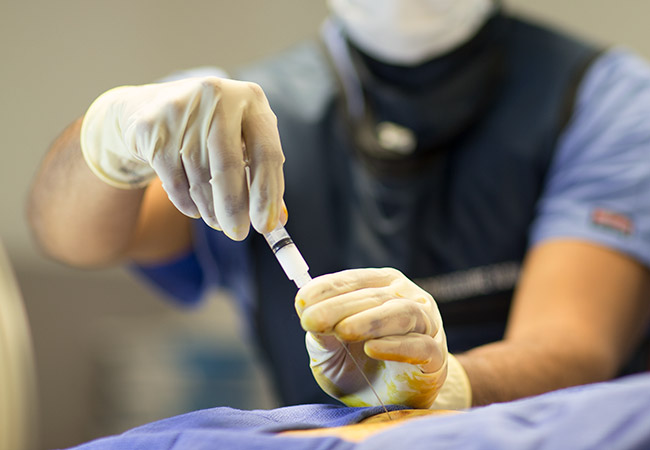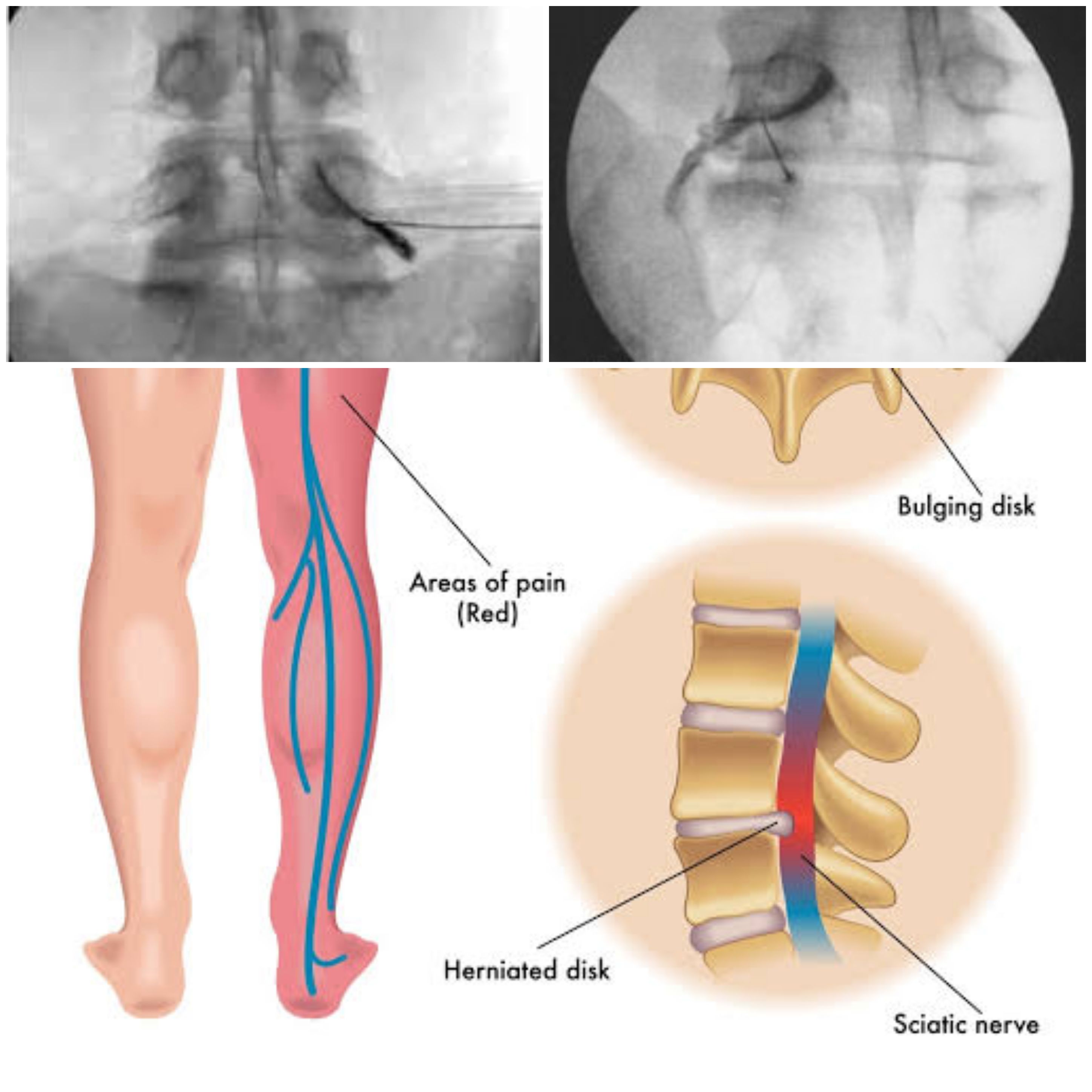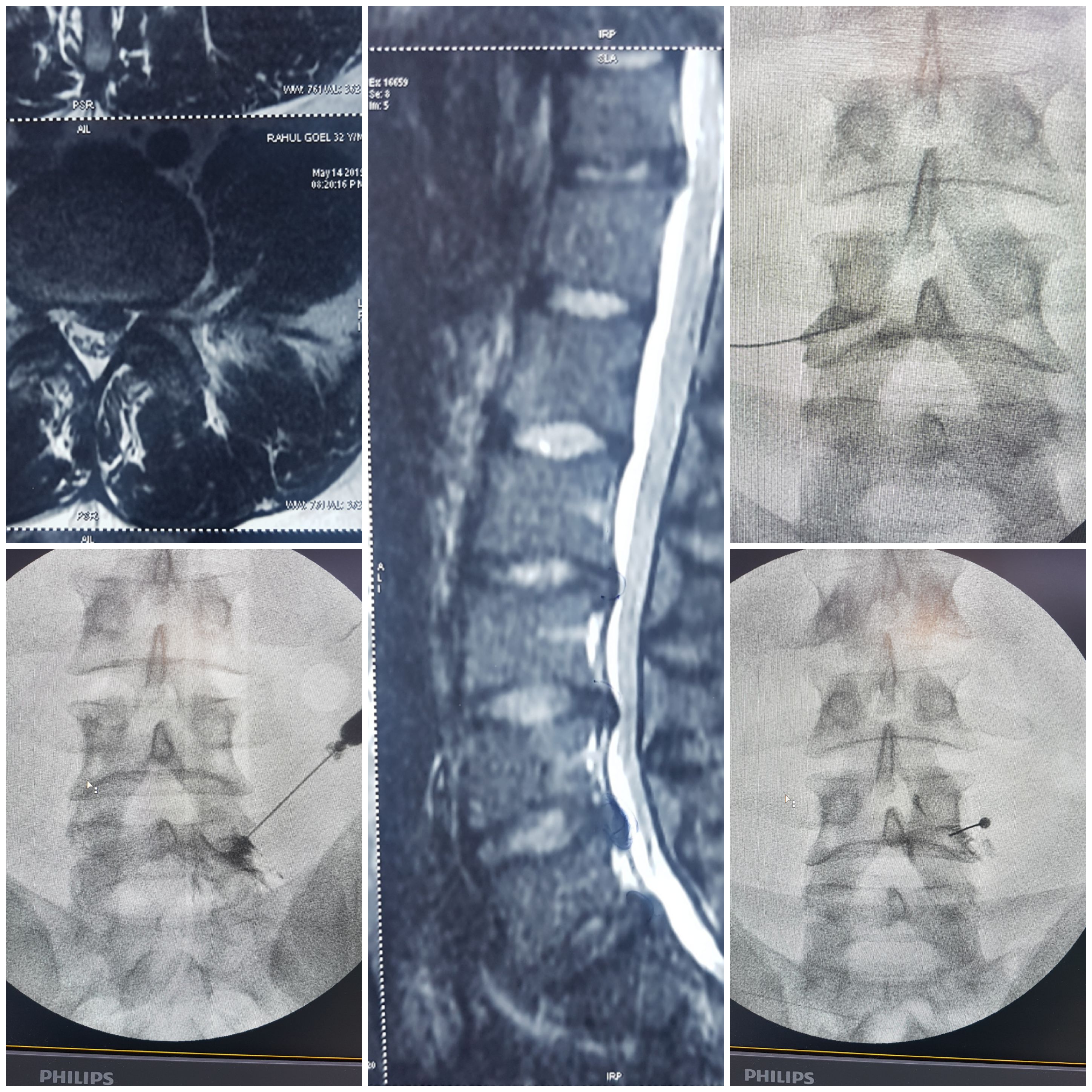EPIDURAL STEROID BLOCK ( TFESI, CAUDAL, INTERLAMINAR )
Indications
- Disc herniation: Radicular Lower limb pains caused by a herniated lumbar disc is not simply due to mechanical compression but is also due to the release of different kinds of inflammatory mediators including phospholipase A2 and prostaglandin E2 from the herniated nucleus pulposus . For the treatment of patients with lower limb radiating pain caused by radiculopathy due to a herniated lumbar disc, there are both surgical and conservative approaches. It has been reported that cases there conservative treatment like Epidural Neuroplasty or Epidural Steroid injections succeed in providing pain relief for a year or more it becomes equally efficacious compared to surgical treatment. degenerative disc disease, and
- spinal canal stenosis,
- failed back surgery syndrome
- post laminectomy scar syndrome

Procedure
Epidural steroid injection at Hospital for Special Surgery is performed by Interventional pain specialists or pain management physicians all of whom have the expertise necessary to safely perform this procedure.
Three routes may be used for epidural injections in the lumbosacral spine: caudal, translaminar, and transforaminal.
- The caudal injection is the least complicated way to access the epidural space; however, it is not as localized or confined an injection as the transforminal approach.
- The translaminar injection delivers the medication directly into the epidural space and therefore closer to the source of pain. However, the medication is not guaranteed to flow to the front epidural space, the area where the irritated nerve can be found. Translaminar injections are still utilized by some physicians if a transforaminal injection cannot be performed and are otherwise at the discretion of the treating physician.
- The transforaminal technique requires a fluoroscope, which is a special x-ray machine that allows your doctor to see dynamic images that allow for precise needle placement. This technique is favored because of the precision with which solutions can be delivered to a specific nerve root and the front location of the needle in the epidural space.
Several different steroid preparations may be used, with or without local anesthetic, to increase the volume and ensure the spread of medication to all areas causing pain.The procedure can last anywhere from 15-30 minutes and requires the patient to lie prone or on the side. After the procedure, patients are asked to rest in a supine or sitting position for a brief time. Because patients receive an anesthetic prior to the injection, temporary pain relief may last for several hours. The TFESI may not start working to relieve pain for up to 10 days, and during that period, pain may increase, that is normal.


Special Instructions
Generally, patients come in about one hour prior to the procedure. Some patients require blood work to rule out an infection or bleeding risks. Patients usually can eat a light meal 4 hours prior to the procedure, and they can resume their normal eating habits after the procedure. Patients must have someone to drive them home post-procedure and should not drive anywhere else for the rest of the day. Do not take a bath, use a hot tub, go swimming or otherwise immerse in water for the rest of the day after the procedure. Do not place any type of heat over the injection site for 24 hours. Most patients can return to work the day following the procedure.
Side Effects And Complications
- Diabetes and congestive heart failure require caution by the doctor performing the procedure.
- The current use of aspirin or nonsteroidal anti-inflammatory drugs is not an absolute contraindication, but some Pain Specialists opt to have their patients stop using these medications up to 7 days before the planned injection in order to reverse the antiplatelet effect, depending on the physicianís preference.
- More common temporary side effects include bleeding, headaches, and flushing.
- Patients with diabetes may have a temporary increase in their blood sugar. This should be discussed with your physician prior to the procedure. Patients may also experience a temporary numbness and tingling.
Procedures
- EPIDURAL STEROID BLOCK ( TFESI, CAUDAL, INTERLAMINAR )
- CERVICAL EPIDURAL NEUROPLASTY
- INTRAARTICULAR FACET BLOCKS
- MEDIAL BRANCH RFA FOR FACETOGENIC PAIN
- THIRD OCCIPITAL NERVE BLOCKS AND RFA
- C0-C1 and C1-C2 BLOCKS
- OCCIPITAL NERVE BLOCKS AND RFA
- SACROILIAC JOINT BLOCKS and RFA
- GASSERIAN RFA FOR TRIGEMINAL NEURALGIA
- BALLOON COMPRESSION FOR TRIGEMINAL NEURALGIA
- INTRAARTICULAR SHOULDER PROCEDURES
- PROLOTHERAPY
- PRP THERAPY
- GENICULAR NERVE RFA FOR KNEE PAIN
- LUMBAR SYMPATHECTOMY FOR LOWER LIMB ISCHEMIA & CRPS
- T2-T3 GANGLION NEUROLYSIS FOR UPPER LIMB ISCHEMIA AND CRPS
- STELLATE GANGLION BLOCKS AND RFA
- TRIGGER POINT INJECTIONS
- INTRARTICULAR TMJ PROLOTHERAPY
- KNEE JOINT INJECTIONS INCLUDING VISCOSUPPLEMENTATION
- CELIAC PLEXUS BLOCKS AND NEUROLYSIS
- SUPERIOR HYPOGASTRIC PLEXUS BLOCKS AND NEUROLYSIS
- GANGLION IMPAR BLOCK AND RFA